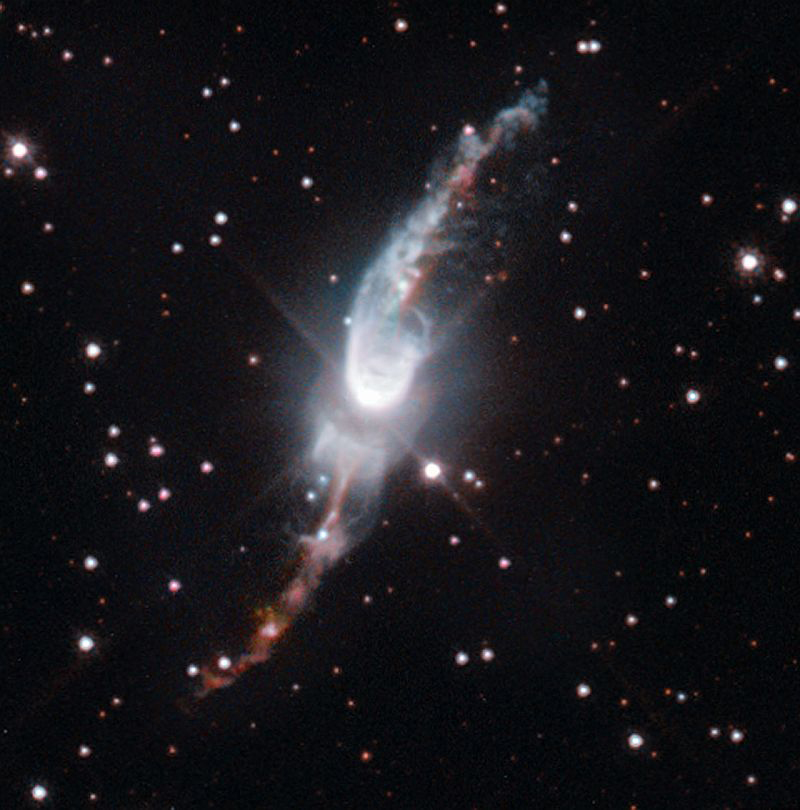Celestial Garden Sprinkler
by Harley White
- Published: Thursday, September 10 2020 00:11

Imagine a garden of cosmic sights
gargantuan in its scope,
a fertile field of celestial delights,
to carry on with the trope.
There gravity trellises stellar made
for astral toddlers to climb
are fashioning every galactic glade
as starlets bloom over time.
This garden replete with prismatic hues
has foliage trimmed in shapes
designed into realms of dramatic views
where musing stargazers traipse.
We find topiary artistic forms,
which burgeon from stars that die
as huge planetary nebulae storms,
like great Gardens of Versailles
an outer space adaption I mean
with flora arranged parterre,
perhaps ornamentally Byzantine,
from star evolution flare.
Could there be gazebos in copses graced
with glorious gingko trees
all gilded in maidenhair raiment taste,
embowered to poets please?
Chromatic spectra of colors may stir
our visions to untold flights
where fairytales effloresce, as it were,
in manifold rainbow heights.
But how will this garden supernal get
the dampening which it needs?
What kind of colossal watering jet
can drizzle on cosmic seeds?
Indeed, just the nebula has been found
to help the vast garden thrive
on measureless metaphorical ground
and keep stellar plants alive.
As ‘Garden-sprinkler’ the nebula’s known,
it’s planetary so-called,
by Camera Three Hubble’s Wide Field shown
with reaches enormous sprawled.
The S-shaped jets have velocity fast,
bipolar in their outflows,
which puzzle scientists present and past
though recent theory goes
that they are created by central source
ejecting gaseous streams,
each one rotating in opposite course,
precessing in lengthy schemes
of stretches of time a thousand years long,
like garden sprinkler immense,
within Sagittarius Archer throng
midst the starry wonders dense.
The braided filaments might bring to mind
our twisting DNA strands
or even the tidy spider’s entwined
domain of gossamer lands.
From tiny to Brobdingnagian big
the sequences replicate,
including humanity’s lively jig
which steps to the tune of fate.
Thus fantasies flash, as clouds in the sky
seem figures we recognize,
akin to the ‘Garden-sprinkler’ on high,
enormous in sweep and size.
Yet let us come down to earth in a way
although empyreal still
by citing impressionist Claude Monet
whose paintings the senses thrill.
In nature tribute, ‘My garden is my
most beautiful art,” he claimed,
‘my masterpiece’, and his works testify
to love for that garden famed.
When searching the cosmos, it becomes clear
that far as the seekers see
no haven for humans other than here
seems fitting for such as we.
An old man in ‘Les Misérables’ said
his own well-being required,
‘a garden to stroll and stars overhead,
what was there left he desired?’
Our species bedeviled with discontent
is dwelling on dear dot blue
in rare mortal moment that’s heaven-sent—
if only we knew it’s true
~ Harley White
* * * * * * * * *
Some sources of inspiration were the following…
“My garden is my most beautiful masterpiece.”
~ Claude Monet
“A garden to walk in and immensity to dream in--what more could he ask? A few flowers at his feet and above him the stars.”
~ Victor Hugo, ‘Les Misérables’,
Image and article ~ A cosmic garden sprinkler…
https://www.spacetelescope.org/images/potw1241a/
Explanation: IRAS 17423-1755 also known as Henize 3-1475 or Hen 3-1475 is a planetary nebula, located in the constellation of Sagittarius around 18,000 light-years away from earth. The central star is more than 12,000 times as luminous as the Sun. Its most characteristic feature is a thick torus of dust around the central star and two S-shaped jets that are emerging from the pole regions of the central star. These jets are long outflows of fast-moving gas travelling at hundreds of kilometers per second. The formation of these bipolar jets has puzzled astronomers for a long time. How can a spherical star form these complex structures? Recent studies suggest that the object’s characteristic shape and the large velocity outflow is created by a central source that ejects streams of gas in opposite directions and precesses once every thousand years. It is like an enormous, slowly rotating garden sprinkler in the middle of the sky. No wonder astronomers also have nicknamed this object the “Garden-sprinkler Nebula”. The picture was taken with Hubble’s Wide Field Camera 3, which provides significantly higher resolution than previous observations made with the Wide Field and Planetary Camera 2 (heic0308).
Image Credit: ESA/Hubble & NASA







Comments